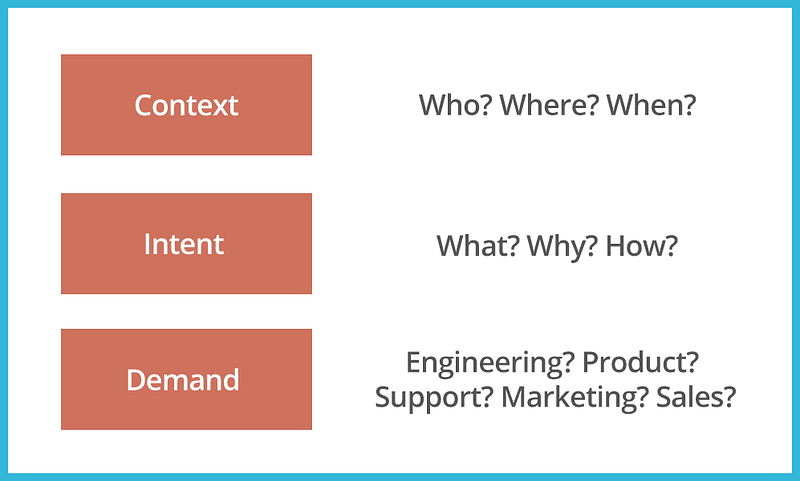Last Updated on August 31, 2023 by David
Step by step guide to gathering insights from customers who care

Being able to extract valuable information and signals out of your everyday customer interactions is one of the most rewarding skill sets you can build into your business culture. Over time, tidbits of information form to create stockpiles of actionable feedback that your teams can utilize to make better decisions for your products or services.
The most valued interactions oftentimes come from your toughest customers. These customers care enough to constantly complain and push your customer service teams to the edge of their tolerance levels. Awesome. Let’s see how we can swim with the current rather against it.
https://powered.by.rabbut.com/p/Tf10?c=8
Step 1: Getting into the right mindset
Working with tough customers is simply not about what your reply looks like or how it reads. Instead of quickly firing off a reply to get rid of the customer, take a step back and ask yourself the following questions:
- Why are you in this business?
- Why are customers important to you?
- What makes your brand or product unique that keeps customers coming back?
- How do you want customers to see you?
- What are your values as a business and how do you support those values through your business culture?
The mindset exercise does two things. 1) It helps reconcile the difference between common frustrations and common aspirations. 2) The essence of running a business is reinforced.
The mindset exercise isn’t meant to be used only when customers with tough questions write in, it’s meant to be ingrained into your company culture and shared among teams. The questions help define who you are and why customers are important to your success.
Step 2: Digging for truth
Customers who love to complain have some common traits:
- They care deeply about the product/service they get for the money they spend.
- They want to get more than what they paid for.
- They are sticklers of quality products and quality service (regardless of how much money they spend).
- They’re vocal and oftentimes overly so.
- They have unreasonable expectations because they are everything above.
- They’re excruciatingly detailed (learn to appreciate this).
Rather than getting upset at who they are and obsessing over the subject line of their email, take some time to dissect and investigate their needs. Most customer service teams fail at this step due to the inability to adequately assess context, intent, and demands.

For example, take a customer who writes:
I’ve emailed your customer service team at least 5 times now about my account’s Instagram integration. Every time I connect to Instagram for authentication I get an error saying it’s not valid. I also can’t associate it to the correct email channel. Why? Please help!
The correct answer is not to tell them to try again or clear their cookies or email Instagram for help resetting their password.
Context: 1) Existing paying customer 2) Complained 5 times 3) Error happens in account on Instagram setup screen.
Intent: 1) Customer is trying to connect an Instagram account 2) There’s an error showing ABC message 3) Customer claims issue can be reproduced by doing XYZ.
Demand: 1) How or who can fix the issue? 2) What can you recommend the customer in the meantime? 3) What expectations do you need to set? 3) What are some necessary changes needed to prevent this in the future and who should you go to for that?
Your potential reply:
Hi John,
Always good to hear from ya! Apologies for the delays in getting back to you (addressing context). I’m more than happy to help you get to the root cause of that error message (acknowledging context).
Can you let me know if you’re trying to connect to just one or multiple Instagram accounts (defining intent)? Please send me a screenshot of that error message after you try to connect (defining intent). Which email channel are you connecting it to (defining intent)?
I’ll get someone on our team here to take a look for you ASAP (demand). In the meantime I recommend deleting all your current setups and not try to connect while we figure things out (demand).
Thanks!
Now that you have a clearer baseline understanding of the customer’s complaint, most of your exchanges with the customer should be to further your understandings of intent and demand. This is where complaints start to turn into feedback that you can extract value out of.
Step 3: Categorizing feedback
Categorizing the feedback you receive can be a bit more nuanced as each business is different. Work with different teams to identify key patterns and best practices to make feedback easy to file, interpret, and address. The basic framework for categorizing feedback we use at Reamaze is the following:
- UI/UX issues and improvements
- New product feature
- Existing product feature
- Engineering issues and improvements
- Marketing
- Service
In the example above where John complains about not being able to set up Instagram can be filed several different ways depending on the root cause of his confusion. By navigating through the customer’s “context”, “intent”, and “demand” matrix you can easily define what needs improving. If more customers complain about the same thing, this becomes even more apparent.

Step 4: Making feedback useful
Ultimately, tracking complaints and turning them into feedback that fuels your business is 20% of the work. It’s not the hard part. Customer feedback is far less useful and rewarding when the feedback loop is missing. To create the feedback loop, make sure
- You work with a team to come up with scalable solutions not just for this customer but all customers.
- You follow up with the customer until he/she is completely satisfied. Go out of your way to confirm this.
- You proactively ask customers if they have other questions and feedback.
- Always tell customers to be vocal even about the smallest things.
Interested in what else we have to say? Make sure to recommend this article and follow us for more stories about startup life, customer service, and tips on treating customers right.
You can also find our multi-brand, multi-channel customer service platform at https://www.reamaze.com.

